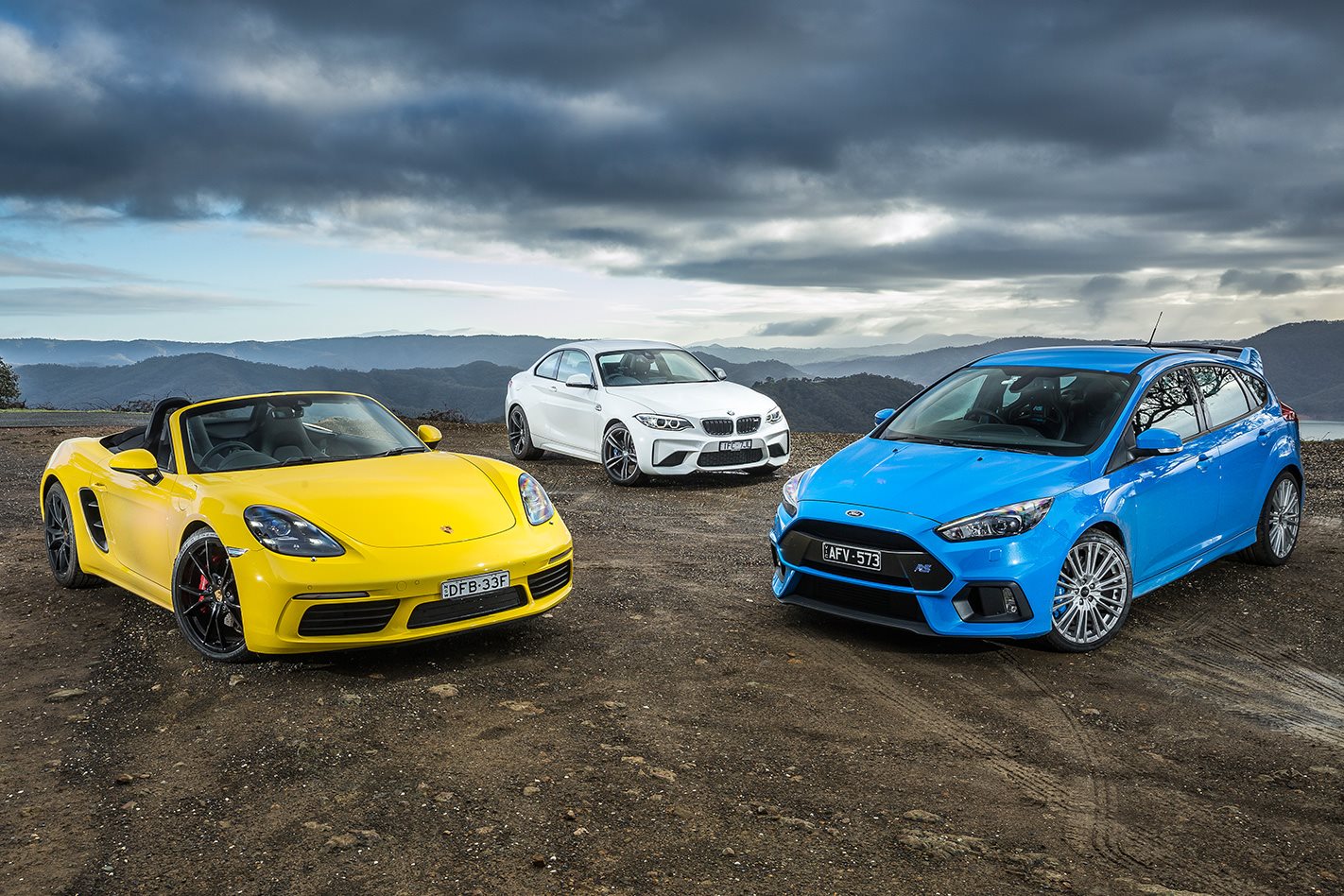THIS wasn’t ever supposed to be a comparison.
First published in the Summer 2016 edition of Wheels Magazine, Australia’s most experienced and most trusted car magazine since 1953.
‘A celebration of 2016’s most wanted’ was the brief, and on the face of it you can see why. The Ford Focus RS, BMW M2 Pure and Porsche 718 Boxster S don’t look like natural cross-shopping candidates, the Porsche costing almost three times the price of the Focus, but at some point between the Wheels office and the hills surrounding Eildon, the brief went out the window. Things became competitive.
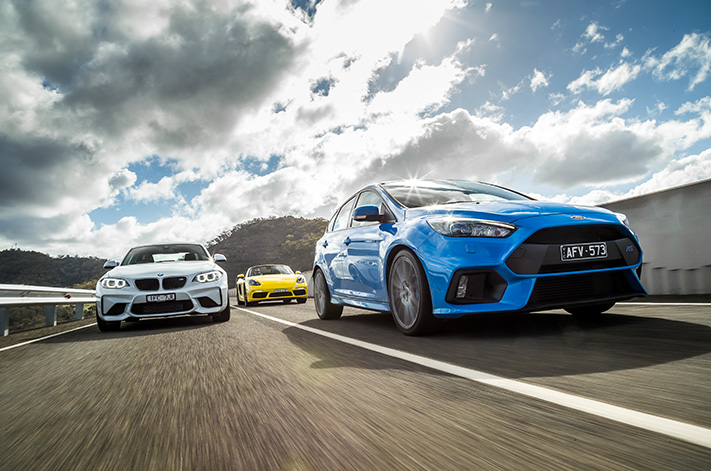
Beyond that, this divergent trio of hatch, coupe and roadster generate a host a questions for the keen driver. Can a hot hatch really level with a clean-sheet sports car on give-and-take roads? Has switching to four cylinders killed the Boxster’s charisma? Does the M2 live up to its billing as the best M car since the E46 M3 CSL? And behind these considerations, a bigger issue to chew on: Have we already peaked? Are these cars less charismatic, less tactile and less enjoyable than their celebrated forebears?
WE’RE somewhere on the road from Eildon to Jamieson. Nobody knows quite where because the mountain ash is so dense that the sat-navs have given up and we’ve lost count of the hundreds of bends draped over these hills for kilometres each way.
At this time of the evening, the highland rainforest is damp and deafeningly quiet. A breeze ruffles the treetops and then you hear it, a distant fusillade followed by a louder crack that rolls and caroms around the basin, raising birds from the canopy.
There are the rising and falling timbres of engines, the rat-a-tat of a rev-limiter being butted, the volume sliders being eased higher and higher. There are no operatic harmonies here; the sounds are discordant, thrashing and angry.
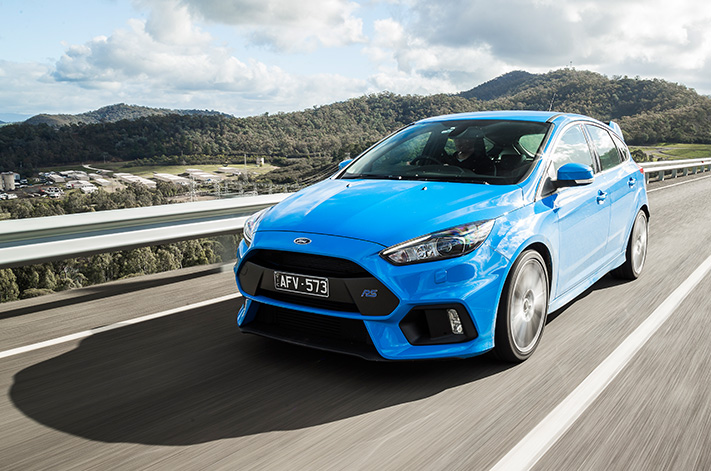
The cheapest of this trio draws the biggest crowds, and the Focus also delivers the most surprises behind the wheel. Although the five-door styling is lower-key than the blistered fist of belligerence that was its immediate predecessor, it’s still hardly the acme of discretion. It doesn’t take long to realise that it’s all a bit of a bluff and that the Ford has reserves of talent undersold by the thud-and-blunder body addenda. Drift mode will likely occupy you for five minutes or so before the novelty wears off and you begin to appreciate the subtlety the GKN-developed all-wheel-drive system delivers.
Thumb the drive controller to Sport mode to get the best from the Focus. There are two damper settings but, unless you’re on a surface that makes a Tilke track seem like a ploughed field, the switch on the end of the column stalk is best left alone. GKN is confident that this development of its Twinster system, which first saw light of day in the Range Rover Evoque, will one day supersede the traditional mechanical differential. Gearing ratios aside, the hardware is much the same, but GKN has tweaked the Focus’s response software to brilliant effect.
Tip the RS into a corner and you can feel the torque-vectoring rear clutch packs at work, directing drive to the outside rear wheel, the car subtly pivoting beneath you. In Sport mode, this means the rear end is overspeeding incrementally. Rather than generate armfuls of opposite lock, it’s merely relieving the work of the steering wheels, easing the friction circle demands of the front tyres and strangling the first sniff of understeer.
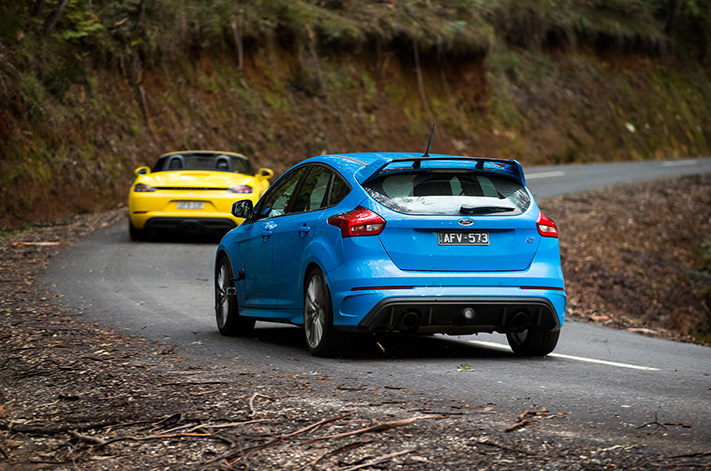
Ride quality is good given the tough body control brief, although the prosaic roots of the RS are felt in the high driving position; that elevated centre of gravity contributes to a degree of head toss that’s largely absent in the other two, lower-slung cars.
Ford Focus RS vs BMW M2 Pure drag race
One upshot of directing drive to the rears is that there’s capacity to work the front-end harder on corner entry, and the 350mm ventilated discs and four-pot Brembos certainly aren’t overkill.
The engine isn’t a straight lift from the Mustang Ecoboost, instead getting a modified Cosworth alloy head and RS-specific intake, exhaust and turbocharger, capable of running 1.8 bar compared to the pony car’s 1.2. Even with a sound amplifier that directs real engine noise into the cabin, the 2.3-litre four is never melodic, lacking the character of the old five-pot Volvo unit. It’s otherwise better in every way.
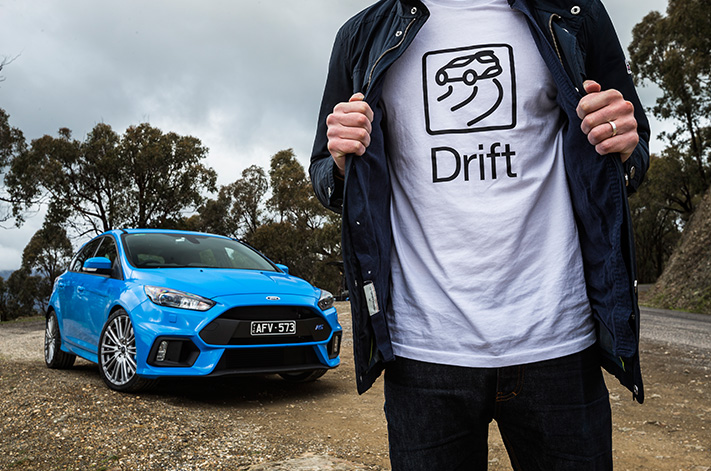
It’s 40 grand and change to step up to the M2 Pure, but it feels a world apart. The riot of competing attractions that is the Focus’s dash is replaced by typically understated self-assurance inside the BMW. Likewise, there’s the same well-judged, pared-down feel to the M2’s chassis tuning, with no adaptive damping or gimmickry, just three drive modes (Comfort, Sport and Sport+) that juggle steering weight, throttle mapping and stability control settings. Choice limits creativity. Driven in isolation, the M2 is an utter joy.
Unfortunately for the BMW, we have a Porsche 718 Boxster S along, which acts as a thudding reality check to the merits of the M2’s body control. It feels pitchy and rubbery after the Porsche, and there’s a lot more processing required to rein in its transfers of mass, by the software or by you. Often both. Consequently, you drive the M2 with a certain margin of reserve. It would be wrong to call the dynamics retro or a throwback, but the straight-six up front sending power to the rears is a time-honoured BMW staple. While the M2 never feels as spiky as the slightly unhinged 1M Coupe, it still feels as if it’s sitting on an oversquare footprint despite the fact that its track/wheelbase ratio is more benign than the Boxster’s.
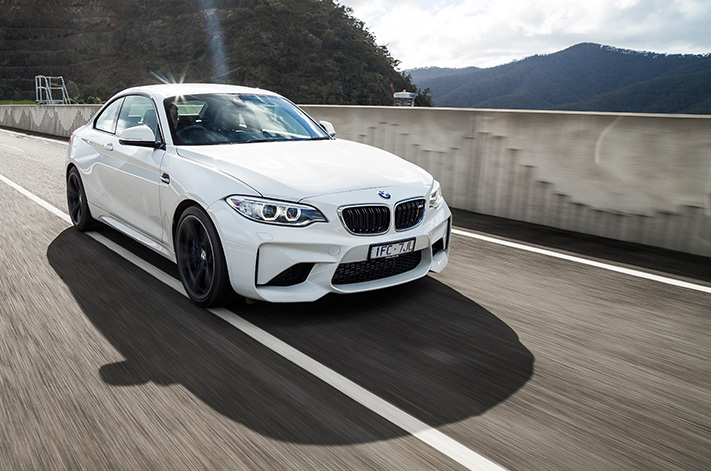
The M2 is not shy of significant merits, though. The engine is the most tuneful, the gearshift action the best of the three, and the driver’s seat is mounted good and low. Even the traditionally underwhelming M-car brakes are up to the task. Above all, the M2 feels the right size, a more natural fit for challenging roads than its overblown M4 sibling. However, I’m not certain I’d choose a manual M2; forking out an extra nine grand and getting the dual-clutch transmission would be the go, netting you a quicker and more economical car that’s packaged with keyless go, electrically adjustable heated seats, adaptive headlights, a remote alarm, launch control and a punchy Harman Kardon 12-speaker stereo. Like the Ford, there’s an old-school handbrake, whereas the Boxster has a parking brake switch, which is hidden in the nether regions of the dash and was universally hated on test.
That parking brake is about the only thing about the Porsche that strikes a bum note. Even the new four-cylinder engine sound is something we get used to, although the optional sports exhaust on the test car merely adds additional bass tones to an engine that could use a few top-note highlights. Just as you think it’s about to soar, the rev-limiter intervenes. One delightful aspect to the 718’s soundtrack is the high-pitched jet whine of the turbo spooling down as you key the ignition off.
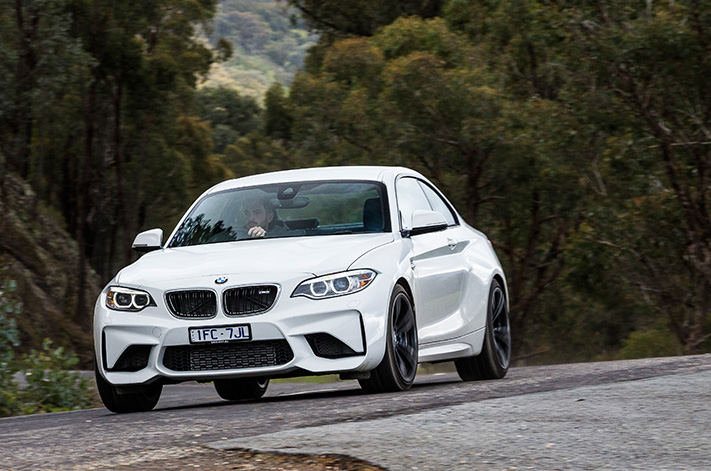
The 718 is a mid-engine, low-compromise vehicle designed as a sports car from the ground up, rather than being the halo model of a more mundane model line. And, to be frank, it shows. There’s a gulf in the quality of feedback, and of predictability of response and mechanical grip compared to the Ford and BMW. A workout that leaves the Focus with its brakes cremated or the M2 driver flapping at the wheel like a pigeon in a box feels like 70 percent in the Boxster.
You might well expect the most expensive offering here to be the quickest, and it is. The clever VGT turbo installation in the Boxster S means that almost any gear will do, as long as you have between 1900 and 4500rpm on the clock. It feels the most aggressively boosted of the three, despite the 718’s larger engine registering 20Nm less than the Ford.
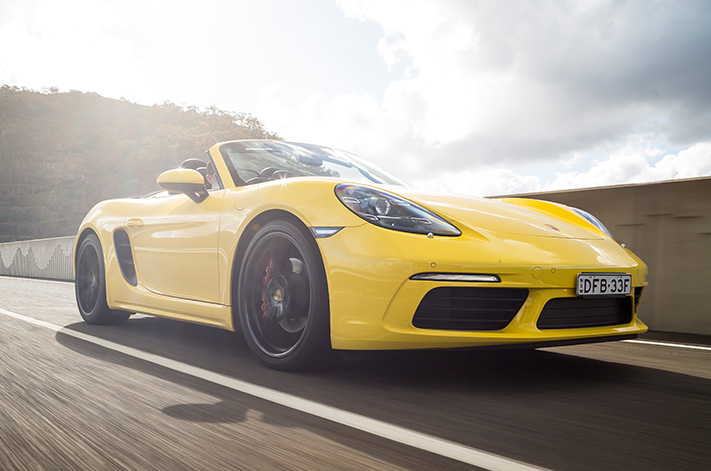
A quick press of a button switches the car into PSM Sport mode, available only with the Sport Chrono package, and the 718 instantly tenses its muscles. Rather than merely raise the threshold at which stability control intervenes, as is common with most intermediate modes, PSM Sport now dampens the initial yaw acceleration, creating a gentler transition between grip and slip.
The Focus might have drift mode, but the 718 has this hero mode where the car subtly massages your ego. You feel the difference when you hold the stability button down for a couple of seconds and PSM disengages, requiring sharper, more decisive inputs. You’re not totally on your own, however, as there’s still an ‘anchoring’ mode where PSM re-engages if it detects braking inputs beyond the ABS intervention point.

COMPARISONS can be odious and, while few would perceive these cars as rivals, representing as they do three equidistant points on a continuum of perceived sophistication, it’s tough not to play favourites. A wholly unscientific straw poll of testers present produced an almost unanimous selection and it was, on the day, the slowest and arguably most flawed car present – the BMW M2 – that took sentimental honours over the finest sports car here (the Boxster S).
All three cars represent absolute benchmarks in their respective niches and offer standout value, but the M2 delivers a purer hit of excitement and a more welcome dose of discretion than the others. On the latter point, there’s arguably a case for a sports-luxe Focus, sharing all the RS’s mechanical trickery but in a classier body.

The game has moved on, and fast. So fast that this feels like an ending of sorts, with three cars that are about as fast as you’d ever want a manual car to be. There are no losers here. Both the Ford and Porsche deliver in spades. The Focus offers a phenomenal bang for the buck while the Boxster’s mature suite of improvements more than compensates for its voice breaking.
It’s the BMW M2’s pared-back, unfussy rectitude that twangs the heart strings hardest, but remember – this wasn’t ever supposed to be a comparison. The M2 is returned as an accidental victor on a classic ticket, but whatever your take on progress, we reckon you’ve never had it so good.



